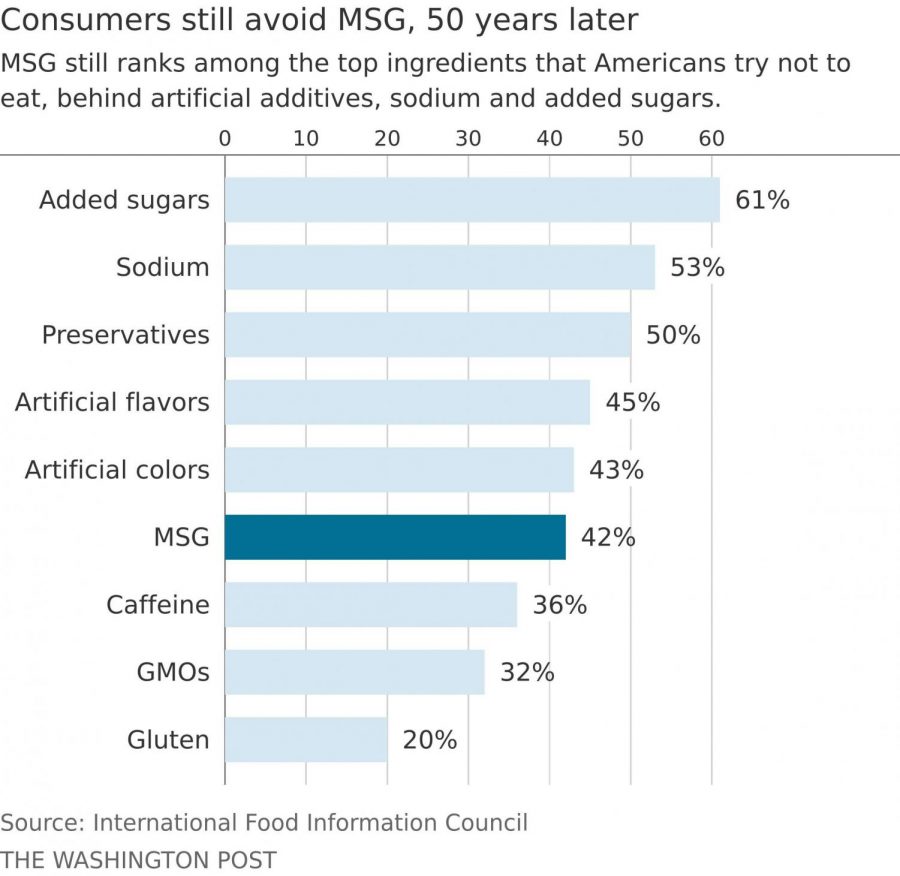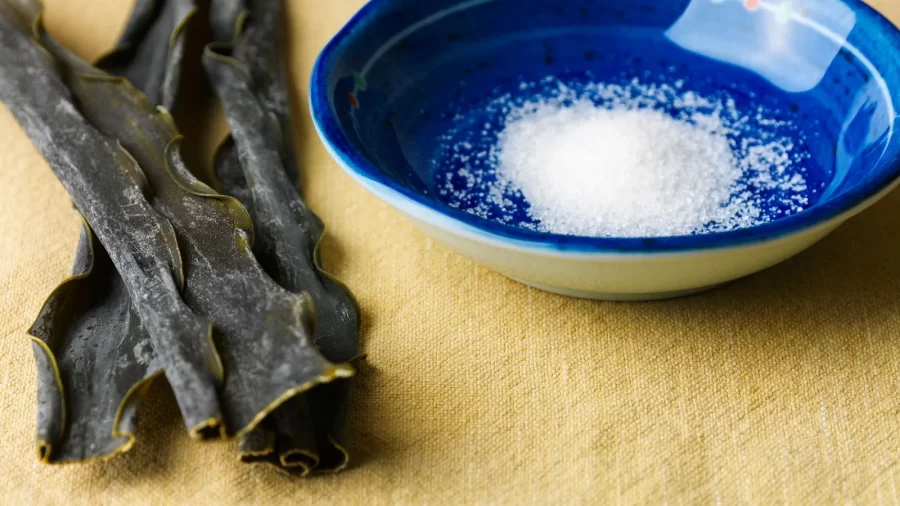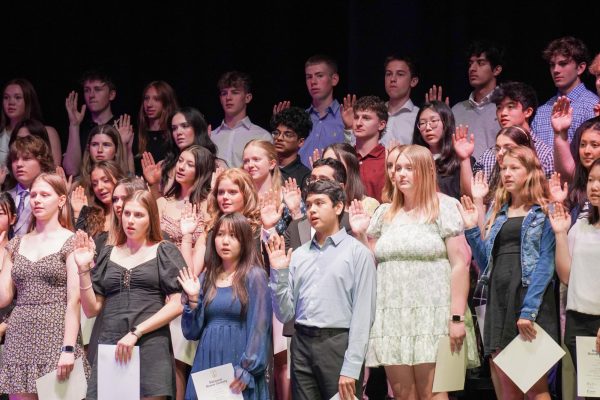With a Grain of Salt
Despite scientific evidence to the contrary, the food additive MSG has long been a target of vilification and a flashpoint for prejudice.
The controversial seasoning was first developed by Ikeda Kikunae, who sought to isolate the umami flavor found in Japanese seaweed.
As you peel back the cardboard folds of the familiar white container with red accents, the spicy and savory aromas emitting from the Chinese takeout are enough to make anyone’s stomach growl. A pair of chopsticks dip into the container and lift the noodles to your tongue, setting off a concatenation of receptors in your mouth and brain, partly due to one special ingredient: MSG.
What is MSG? No, not Madison Square Garden or “message” or the cable company.
MSG stands for monosodium glutamate, which is basically a fancy way of saying a mixture of two molecules: sodium (salt) and glutamate, an amino acid common in various plant and animal proteins. MSG was first invented in 1908, by Japanese chemist Professor Ikeda Kikunae. Kikunae was trying to isolate a distinct taste found in kombu, a Japanese seaweed — a rich, savory flavor that he called “umami”, which has since been recognized as the fifth taste alongside sweet, sour, salty, and bitter in food science. Kikunae succeeded in creating an MSG seasoning in a crystalline form similar to salt and sugar that was soluble in water.
With no inherent flavor of its own, MSG acts as a taste enhancer when added to foods, bringing out that delicious, salty umami flavor in dishes. It quickly became a staple in Asian kitchens by the 1930s and entered commercial foods worldwide by the 20th century.
But controversy soon arose.
In 1968, Dr. Robert Ho Man Kwok wrote a letter to the New England Journal of Medicine detailing a series of symptoms he experienced after eating at a Chinese restaurant, including headaches, numbness, and heart palpitations. He questioned whether this illness could be tied to MSG. The publication of the letter would spark a decades-long media craze and public outcry over the safety of MSG and the coining of the illness “Chinese Restaurant Syndrome.” Claims of similar symptoms began circulating amongst the population, leading to MSG being blamed for everything from obesity to Alzheimer’s to murder.
In the eyes of a significant portion of the American public, MSG has already been tried and found guilty.
But the proliferation of anecdotal claims had no basis in research.
Despite media sensationalism and continued controversy, the scientific consensus on MSG is clear: it’s safe for consumption. MSG has been designated “generally recognized as safe” by the FDA. The Joint Expert Committee on Food Additives of the UN Food and Agriculture Organization and the World Health Organization placed MSG in the safest category of food ingredient.
Furthermore, a study by Morselli and Garatini indicates that “the group that had received broth without MSG reported a number of CRS symptoms, including headache, flushing and tightness in the chest, whereas the group that received the actual MSG broth reported no such symptoms.”
In another double-blind study by Richard Kenney of George Washington University, participants drank a “soft drink” solution for four days, on two of which the solution contained six grams of MSG. Two of the six participants reacted to both solutions, one with MSG and the other without; the other subjects reacted to neither.

While critics of MSG like Dr. John Olney have conducted studies where MSG was injected or force-fed to rodents and claimed resultant various afflictions of neurotoxicity, a review of Olney’s methodology by the International Food Information Council Foundation stated “. . . the dosages of MSG used in these studies were extremely high and the methods… do not accurately represent the way humans consume MSG.” Because, well, most of us don’t inject vials of MSG into our brain when we sit down for a bowl of ramen.
The growing plurality of scientific studies proving the legitimacy of MSG have done little to ameliorate the controversial nature of the seasoning. In the eyes of a significant portion of the American public, MSG has already been tried and found guilty. Hosts of alarmist webpages and anti-MSG activists have passionately campaigned against the seasoning for decades, fueled by sensationalist journalism and biased reporting, as well as underlying racism and xenophobia.
Even though MSG is naturally occurring in a variety of foods, such as cheese, mushrooms, and tomatoes, present in many processed foods from Doritos to ranch dressing, and used in multiple cuisines, its vilification has overwhelmingly centered around its use in American Chinese restaurants. Long-standing prejudices labeling Asian eating customs as “dirty”, “exotic”, and “dangerous,” combined with media headlines that exaggerated the conclusivity of studies on MSG’s side effects, have created a dangerous mix of misinformation and fear mongering.
This link between our psychological biases and our actualized experiences is far from pure speculation; numerous studies have shown that our pre-existing beliefs (e.g., that a specific cuisine or ingredient is inherently harmful) can have a demonstrable effect on our physical reactions when eating. The psychological term for this is the nocebo effect, or as one article names it, “the placebo effect’s evil cousin — where the expectation of harm then leads to a negative outcome.”
This link between our psychological biases and our actualized experiences is far from pure speculation; numerous studies have shown that our pre-existing beliefs (e.g., that a specific cuisine or ingredient is inherently harmful) can have a demonstrable effect on our physical reactions when eating.
As Monica Singh writes in a Harvard Law paper, “[This] begs the question – to what degree are CRS and its associated symptoms simply a product of the human mind and the power of the popular press?… After conducting an MSG study, Dr. Daryl Altman… commented that she found it disturbing that even after participants were shown that they had consumed large amounts of MSG without experiencing any sort of reaction, ‘that didn’t stop them from believing that MSG was a problem.’ Dr. Altman summarized her findings by stating, ‘there’s a high prevalence of belief, and a low prevalence of reality.’”
It may beggar belief that such biases exist, considering the clear evidence that suggests the contrary. So why are we so inclined to believe alternative facts?
As Kirsten Weir writes for the American Psychological Association, “We don’t just delude ourselves when it comes to our health and well-being. Research shows we also interpret facts differently if they challenge our personal beliefs, group identity or moral values.”
And while there’s nothing inherently wrong with anecdotal accounts, the issue arises when the idea of expertise becomes democratized — when people vehemently push an idea based on circumstantial evidence despite the mountain of contradictory findings in legitimate scientific studies.
Most of the afore-mentioned symptoms that people experience are not caused innately by the actual MSG; there are a host of other factors that could be to blame. Too much sodium intake can cause very similar effects, regardless of the glutamate. Because MSG makes food taste better, it can lead to increased consumption, to which obesity can be attributed. Worries that MSG can cause Alzheimer’s were later found to be caused by natural glutamate imbalances.
Of course, there are people who may be legitimately sensitive to MSG and should moderate their consumption. But food sensitivities are far from exclusive to MSG, and people aren’t so quick to condemn other foods just because a small segment of the population can’t eat them. Like any other food, moderation is key — the phrase “the dose makes the poison” comes to mind.
The lesson enshrined in the history of MSG echoes even more loudly in the shadow of a post-pandemic society. Familiar images of fear around Chinese restaurants and the shoving aside of scientific study for circumstantial evidence force us to question behavioral patterns. How much of our actions are influenced by our predisposition to confirm our inherent prejudices? Why are people inclined to deem personal or anecdotal experiences equally or even more valid as empirical evidence that suggests the contrary? The old adage “History repeats itself” is reaffirmed once again as the year of the pandemic feels like a rerun of a TV show episode we’ve already watched.
So the next time you crack open a box of kung pao chicken or lo mein, know that you’re consuming a valuable lesson in the dangers of implicit prejudices, biased journalism, and ignorance of science.

Sophie Lu is a senior at NASH. She loves reading, writing, travel, and binging The Office while eating copious amounts of purple Doritos. Outside of The Uproar, she is a member of Speech and Debate, DECA, and orchestra.












Michelle Hwang • Oct 24, 2021 at 12:16 am
SOPH what an interesting and important and well written article. Thank you for educating.